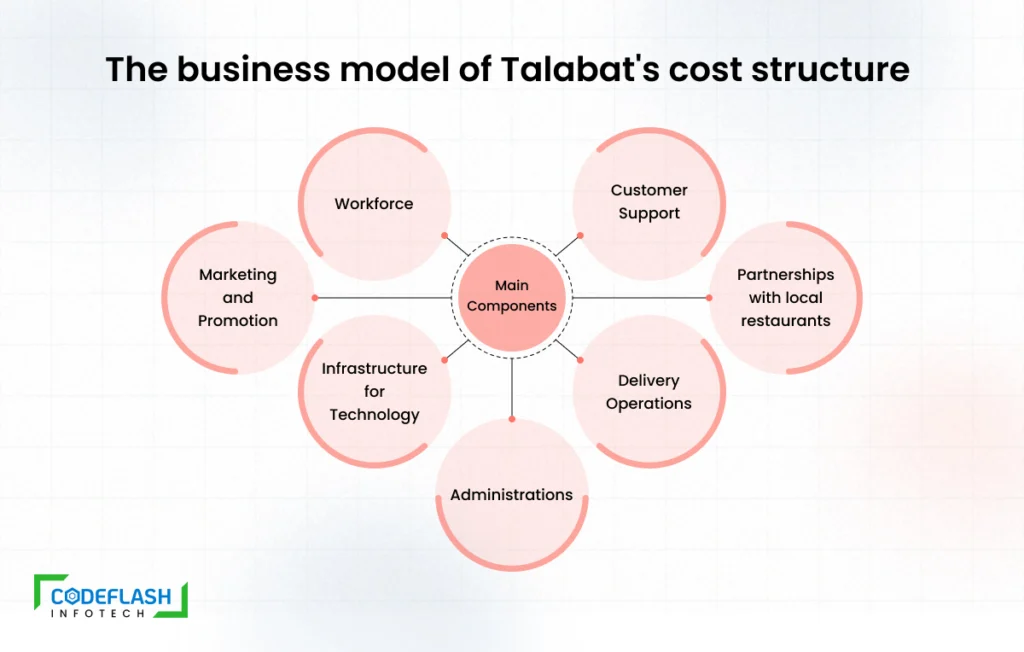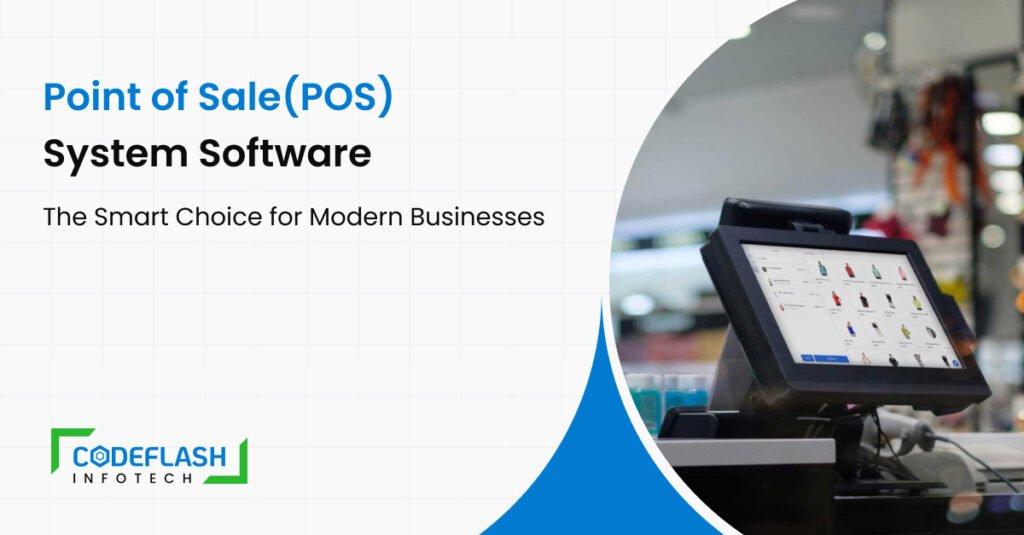
Talabat Business Model and Revenue Model: How Talabat Makes Money
27 OCTOBER
Thinking about to Start a Food Delivery Business from scratch?
talabat, A Kuwait-based business has completely changed how consumers purchase food in the Middle East with its user-friendly online ordering system. But how can Talabat maintain client satisfaction while making money? We’ll examine the Talabat Business Model in more detail and analyze its effectiveness in this blog article. So let’s get started by grabbing a snack (or ordering one from Talabat)!
Talabat embraced AI’s potential in 2023 by adding a ChatGPT function to its platform. Users can now interact with an AI chatbot in dynamic and tailored discussions, improving their entire user experience. The AI-powered chatbot helps clients place orders and delivers real-time service while also making recommendations and answering questions.
Using Talabat AI, Talabat has shown its dedication to keeping on the cutting edge of technical food delivery app development and providing users with a flawless, personalized meal delivery experience.
What Is the Business and Revenue Model for Talabat?
Middle Eastern-based Talabat is an internet platform for ordering and delivering meals. A group of businessmen in Kuwait launched it in 2004. Since then, the business has grown to include more nations in the area, such as Saudi Arabia, Bahrain, Qatar, Oman, Jordan, and the United Arab Emirates. Many customers seeking a simple and practical approach to purchasing meals online frequently choose Talabat web businesses.
Customers may browse an extensive range of restaurants, menus, and food products on Talabat’s user-friendly online platform, including a website and mobile applications.
- Restaurant Collaborations:
Talabat collaborates with nearby eateries and welcomes them to their platform. These eateries range from large, well-known brands to more modest, independent places. Talabat uses its extensive network of eateries to provide clients with various cuisines and eating choices. - Placing an Order:
Users log into the Talabat Business Model platform, choose their location, and then peruse the list of available eateries. They may browse menus, read reviews, and look at ratings to make wise judgments. Customers use the Talabat platform to place their orders after choosing their chosen restaurant and menu items.
Talabat collaborates with nearby eateries and welcomes them to their platform. These eateries range from large, well-known brands to more modest, independent places. Talabat uses its extensive network of eateries to provide clients with various cuisines and eating choices. - Commission-based pricing:
Talabat normally assesses a commission fee to the eatery for each order processed by its platform. Depending on the terms of the contract with the restaurant, the commission % may change. Through this revenue model, Talabat can profit from the higher sales volume brought about by its platform. - Delivery costs:
To offset the expense of delivery services, Talabat may also charge clients a delivery fee in addition to commission costs. The distance, location, and order amount all affect this cost. Additionally, certain restaurants could provide complimentary delivery as a marketing strategy. - Subscription:
Talabat may provide subscription services, such as loyalty programs or premium memberships, that provide consumers extra perks like savings, exclusive deals, or quicker delivery choices. These subscriptions may enable Talabat to generate more money. - Technology and Infrastructure:
Talabat invests in creating and maintaining its online platform to provide clients with a simple ordering process and restaurants with effective order management. This covers real-time order tracking, client assistance, and safe payment methods. - Advertising and Promotions:
Talabat provides eateries using its platform with chances for advertising and promotions. To boost their exposure and attract more consumers, restaurants may pay to run targeted advertising or display their listings prominently. By charging restaurants for these advertising services, Talabat makes money. - Partnerships & Integration:
To offer integrated services on its platform, Talabat may collaborate with a variety of companies, such as payment processors or other service providers. Talabat can generate additional money from these alliances by way of revenue-sharing arrangements or referral payments. - Useful Information:
Talabat gathers useful information about consumer preferences, ordering trends, and restaurant performance. To assist restaurants in bettering their operations and making data-driven decisions, it may monetise this data by providing them with insights, analytics, and market research services. The restaurant industry may benefit greatly from this data-driven income stream if it wants to improve its business plans.
Overall, the Talabat Business Model is based on building an easy-to-use platform that links clients with various restaurants, manages food delivery logistics, and generates income through commission fees and delivery fees. Talabat has become a top meal delivery platform in the Middle East and North Africa by adding value to its users and restaurant partners.
Overview of Talabat's Business Model: An Examination of Its Principal Elements
The Talabat Business Model includes several crucial components essential to its success as an online meal delivery service. Some of the salient characteristics of the Talabat business model are as follows
- Wide-ranging Restaurant Network:
Talabat collaborates with many restaurants, including well-known chains and neighbourhood eateries, to provide guests with various cuisines and to eat alternatives. Customers may browse a variety of menus and locate their preferred culinary products thanks to the large restaurant network. - Explore restaurants and Menus:
Users may easily explore restaurants, menus, and food products on Talabat’s user-friendly online platform, including a website and mobile applications. Customers can easily browse for products and place purchases thanks to the platform’s smooth and simple user interface. - Customize and Alter order:
Talabat lets clients place orders directly through the site and customize their selections. Customers can alter their orders to suit their preferences and dietary needs by adding specific instructions, indicating preferences, or asking for dish alterations. - Real-Time Monitoring:
Talabat provides real-time order monitoring so that clients may keep track of their delivery status. Customers may monitor the progress of their orders, get a delivery time estimate, and keep track of where their food is. - Many Payment Options:
Talabat offers clients freedom and convenience when paying for their products, Talabat accepts a number of payment options, including cash on delivery, credit/debit cards, and digital wallets. - Infrastructure For Delivery:
To ensure effective and prompt delivery, Talabat employs a fleet of delivery drivers or has relationships with other delivery firms. The delivery infrastructure is built to reduce delivery times to accommodate a high volume of orders. - Customer Support:
Talabat offers customer support services to respond to questions, worries, and problems relating to orders or the platform. Customers may reach the support staff by phone, email, or in-app chat to ask questions and get help with any issues they might be having. - Promotions and Discounts:
Talabat offers promotions, discounts, and other special deals to entice clients and promote repeat purchases. These promotional deals might include price reductions, free delivery, or special deals from affiliated eateries. - Loyalty Programs:
Subscription-based services and loyalty programs may also be introduced by Talabat, giving clients further advantages. These initiatives reward customers, offer discounts, or offer speedier delivery choices, increasing their participation and loyalty.
These attributes work together to enhance Talabat’s convenience, variety, and overall user experience, making it a well-liked option for online meal delivery in the areas where it operates.
Examine the Talabat Business Model's Advantages
Numerous parties, including customers, eateries, and the platform itself, can gain from the Talabat Business Model.
- Customers may easily browse various restaurants and dining selections on Talabat, which offers a simple platform. Customers may quickly place orders from the convenience of their homes or offices to save time and effort. Customers may keep track of the progress of their delivery with Talabat order monitoring.
- Talabat enables restaurants to access a bigger client base outside of their physical locations, expanding their customer base. Restaurants cooperating with Talabat may use the platform’s large user base and internet visibility to draw in more consumers. For participating restaurants, this enhanced visibility may result in improved order volumes and sales.
- Delivery Infrastructure: Talabat invests in creating and maintaining a dependable delivery infrastructure through its delivery driver fleet or collaborations with other delivery firms. This infrastructure makes it possible for restaurants that would not have delivery services to provide them to consumers, increasing their potential customer base.
- Marketing and Promotion: Talabat offers restaurants marketing and promotional options through its platform. Restaurants may promote their menus, draw attention to special deals, and get exposure to many potential consumers. Restaurants benefit from Talabat’s advertising and marketing tools, which help them become more visible and draw in more business.
- Talabat gathers and examines data on consumer preferences, ordering patterns, and restaurant performance. Restaurants may use this information to better understand their target market, optimize their menus, and make strategic business decisions. Restaurants may receive insights and analytics services from Talabat to improve their operations and product offerings.
- Talabat’s business concept is built to produce income through several different avenues. The platform’s financial viability and expansion are aided by restaurant commissions, client delivery fees, advertising income, and maybe subscription services.
- Talabat’s activities necessitate the employment of delivery drivers, customer service agents, and other people. Talabat boosts local economies by extending its presence and offerings by generating job opportunities.
- Technological and Fluid Integration: Talabat makes investments in the creation and upkeep of a strong technological infrastructure to guarantee a fluid ordering process for customers and effective order management for restaurants. This covers attributes including safe payment methods, timely alerts, and user-friendly interfaces.

The Business Model of Talabat's Cost Structure
The Talabat business model’s cost structure is made up of a number of elements that are essential to its functionality and sustainability. Customers may buy food for delivery or pickup through Talabat, an online portal that connects them with nearby businesses. For the platform to enable smooth interactions between consumers and restaurants, reliable infrastructure and committed personnel are essential.
The main components of the cost structure are as follows:
- Infrastructure for Technology:
Talabat makes significant investments in creating and maintaining a scalable and secure infrastructure for technology. Costs for servers, databases, cloud storage, and software development are included. The platform must be able to manage a lot of orders, user information, and restaurant details while maintaining a positive user experience. - Workforce:
To manage all facets of the business, Talabat has a diversified team of specialists on staff. This comprises programmers, IT specialists, customer service agents, marketing and sales workers, and office managers. The cost structure includes a sizeable portion related to these workers’ salaries, benefits, training, and office space expenses. - Marketing and Promotion:
Talabat allots funds for marketing and advertising initiatives to attract clients and raise brand recognition. This covers influencer marketing, search engine optimization (SEO), social media campaigns, digital advertising, and other online and offline marketing strategies. These costs are required to both attract new clients and keep current ones. - Partnerships with local restaurants:
Talabat incurs expenses for establishing and upholding these relationships. This includes costs for contract negotiations, company growth, legal fees, and operational assistance. The platform may also provide rewards or discounts to entice eateries to sign up and actively take part in the delivery service. - Delivery Operations:
Talabat may use its fleet of delivery drivers or work with other logisticians. The price structure takes into account expenditures for hiring and educating delivery personnel, upkeep of cars or agreements with delivery partners, insurance protection, gasoline, and other operational costs. Deliveries must be effective and timely if the platform is to succeed. - Customer Support:
Talabat places a high priority on offering first-rate customer support. In order to manage consumer queries, complaints, and support requests, technology and employees must be invested in. The cost structure includes expenses for customer service channels, including phone lines, chatbots, ticketing systems, and employee pay. - Administrations:
Talabat incurs administrative and overhead expenditures such as office rent, utilities, insurance, legal and accounting fees, and other standard operating expenses, much like any other firm. These expenses are essential to the organization’s efficient operation.
The Talabat Business Model's Obstacles
Even though the Talabat Business Model has proven effective, it still has certain difficulties. Some of Talabat’s main difficulties are listed below:
- Competitive Environment:
Many businesses seek market share in the highly competitive online meal delivery sector. With its delivery services, Talabat confronts competition from restaurants and local and international food delivery providers. Strategies for ongoing innovation, client acquisition, and customer retention are necessary to stay ahead of the competition. - Operating Expenses and Profitability:
Maintaining an online meal delivery service requires significant operating expenses for things like marketing, technical infrastructure, logistics, and customer support. It can be difficult to balance these expenses with commission and delivery fees, especially in markets with intense price rivalry. Ensuring profitability while remaining competitive is a constant concern. - Timely Delivery And Satisfaction:
Timeliness and delivery logistics are important for ensuring client satisfaction. The administration of a sizable fleet of delivery drivers, route optimization, and handling of high-demand periods can be challenging. Things like traffic, the outside temperature, and the availability of delivery staff can impact delivery timings. It is crucial yet difficult to keep a distribution network that is dependable and effective. - Quality Control:
Talabat’s partner restaurants’ reputation depends on the service level they provide. It can be difficult to ensure consistent food quality, order accuracy, and adherence to food safety requirements when working with many restaurants that employ various operating procedures. Customer satisfaction and loyalty largely depend on maintaining strict quality control procedures and responding to complaints as soon as they arise. - Rules:
Online meal delivery businesses must follow several rules and laws, including data security, food safety, licensing, and labour laws. Following these rules in many locales and keeping current with evolving legal requirements might take time and effort. Talabat must maintain compliance when operating in several legal systems. - Client Retention and Loyalty:
It might take a lot of work to cultivate a loyal client base in the online meal delivery industry. Depending on price, promotions, and service quality, customers can migrate between several platforms. The best ways to keep clients and promote repeat business are to deliver an exceptional user experience, make tailored suggestions, and offer reward programs. - Expansion of the Market and localization:
Talabat works in several nations with various cultures, languages, and tastes. It might not be easy to expand into new areas and adapt the platform to local needs, such as language support and regional cuisines. Success in every market requires understanding and sensitivity to the dynamics of the local marketplace. - Management of Reputation:
Talabat’s reputation is essential for bringing in and keeping diners and restaurant partners. Negative incidents like late delivery, incorrect orders, or subpar customer service can harm a brand’s reputation. Proactive customer service, conflict resolution, and openness are essential for a company to keep a good reputation.
Final Words
To summarise, Talabat’s business strategy is a superb illustration of creating a profitable food delivery delivery service business. They offer clients affordability and convenience, allowing restaurants to join them without worrying about high setup expenses.
Feel free to reach out to us today and let’s work together to create a cutting-edge food delivery application, with the potential to become the next big name in the market, the same as Talabat or even surpassing them.
Table of Content
Want to avoid leaving the house but are hungry?
What Is the Business and Revenue Model for Talabat?
Overview of Talabat’s Business Model: An Examination of Its Principal Elements
Examine the Talabat Business Model’s Advantages
The Business Model of Talabat’s Cost Structure





